Dressings and topical agents for preventing pressure ulcers
- PMID: 39625073
- PMCID: PMC11613325
- DOI: 10.1002/14651858.CD009362.pub4
Dressings and topical agents for preventing pressure ulcers
Abstract
Background: Pressure ulcers occur when people cannot reposition themselves to relieve pressure over bony prominences. They are difficult to heal, costly, and reduce quality of life. Dressings and topical agents (lotions, creams, and oils) for pressure ulcer prevention are widely used. However, their effectiveness is unclear. This is the third update of this review.
Objectives: To evaluate the effects of dressings and topical agents on pressure ulcer prevention, in people of any age without existing pressure ulcers, but at risk of developing one, in any healthcare setting.
Search methods: We used the Cochrane Wounds Specialised Register, CENTRAL, MEDLINE, two other databases, and two trial registers, together with reference checking, citation searching, and contact with study authors to identify the studies that are included in the review. The latest search date was November 2022. We imposed no restrictions on language, publication date, or setting.
Selection criteria: We included randomised controlled trials that enroled people at risk of developing a pressure ulcer.
Data collection and analysis: We used standard Cochrane methodological procedures.
Main results: In this update, we added 33 new studies, resulting in a total of 51 trials (13,303 participants). Of these, 31 studies involved dressings, 16 topical agents, and four included both dressings and topical agents. All trials reported the primary outcome of pressure ulcer incidence. Dressings Pressure ulcer incidence We made a total of 13 comparisons with 9027 participants. We present seven prioritised comparisons in the summary of findings (SoF) tables, as follows: silicone foam dressing versus no dressing (18 trials, 5903 participants; risk ratio (RR) 0.50, 95% confidence interval (CI) 0.33 to 0.77); foam dressing versus film dressing (3 trials, 569 participants; RR 0.72, 95% CI 0.20 to 2.67); hydrocellular foam dressing versus hydrocolloid dressing (1 trial, 80 participants; RR not estimable); silicone foam dressing type 1 versus silicone foam dressing type 2 (2 trials, 376 participants; RR 0.80, 95% CI 0.56 to 1.15); foam dressing versus fatty acid (2 trials, 300 participants; RR 1.67, 95% CI 0.49 to 5.72); polyurethane film versus hydrocolloid dressing (1 trial, 160 participants; RR 0.58, 95% CI 0.24 to 1.41); and hydrocolloid dressing versus no dressing (2 trials, 230 participants; RR 0.60, 95% CI 0.46 to 0.78). All low or very low-certainty evidence. The evidence is very uncertain about the effect of dressings on pressure ulcer development. Pressure ulcer stage Three comparisons reported pressure ulcer (PU) stage. Silicone foam dressing versus no dressing: PU stage 1 (8 trials, 1823 participants; RR 0.32, 95% CI 0.13 to 0.79); PU stage 2 (10 trials, 2873 participants; RR 0.47, 95% CI 0.30 to 0.73); PU stage 3 (3 trials, 718 participants; RR 0.45, 95% CI 0.06 to 3.21); PU stage 4 (2 trials, 610 participants; RR 0.21, 95% CI 0.02 to 1.77); unstageable PU (1 trial, 366 participants; RR 0.20, 95% CI 0.01 to 4.09); deep tissue injury (3 trials, 840 participants; RR 0.32, 95% CI 0.09 to 1.08). Foam dressing versus film dressing: PU stage 1 (1 trial, 270 participants; RR 0.56, 95% CI 0.39 to 0.80); PU stage 2 (1 trial, 270 participants; RR 1.00, 95% CI 0.06 to 15.82); deep tissue injury (1 trial, 270 participants; RR 0.67, 95% CI 0.11 to 3.93). Hydrocolloid dressing versus no dressing: PU stage 1 (1 trial, 108 participants; RR 0.54, 95% CI 0.31 to 0.94); PU stage 2 (1 trial, 108 participants; RR 0.86, 95% CI 0.28 to 2.66). All low or very low-certainty evidence. The evidence is very uncertain about the effect of dressings on different stages of pressure ulcer development. Adverse events One comparison reported adverse events: silicone foam dressing versus no dressing (3 trials, 2317 participants; RR not estimable; very low-certainty evidence). Silicone foam dressings may have little to no effect on the incidence of adverse events, but the evidence is very uncertain. Topical agents Pressure ulcer incidence We evaluated seven comparisons with 4276 participants. We present five prioritised comparisons in the SoF tables as follows: fatty acid versus placebo (6 trials, 2201 participants; RR 0.86, 95% CI 0.54 to 1.36); fatty acid versus usual care (7 trials, 1058 participants; RR 0.64, 95% CI 0.46 to 0.84); cream versus fatty acid (1 trial, 120 participants; RR 3.00, 95% CI 0.32 to 28.03); cream versus placebo (3 trials, 513 participants; RR 1.18, 95% CI 0.59 to 2.36); and cream versus usual care (1 trial, 47 participants; RR 1.60, 95% CI 0.84 to 3.04). All very low-certainty evidence. It is very uncertain whether they make any difference to PU development. Pressure ulcer stage Two comparisons reported PU stage. Fatty acid versus usual care: PU stage 1 (2 trials, 180 participants; RR 1.00, 95% CI 0.49 to 2.03); PU stage 2 (2 trials, 180 participants; RR 0.19, 95% CI 0.07 to 0.53). Cream versus placebo: PU stage 3 (1 trial, 258 participants; RR 1.25, 95% CI 0.34 to 4.55); PU stage 4 (1 trial, 258 participants; RR 0.33, 95% CI 0.01 to 8.11). Both low or very low-certainty evidence. It is uncertain whether they make any difference to the stage of PU development. Adverse events One comparison reported adverse events: fatty acid versus placebo (3 trials, 967 participants; RR 4.38, 95% CI 0.50 to 38.30; very low-certainty evidence). Fatty acid may have little to no effect on the incidence of adverse events compared to placebo, but the evidence is very uncertain. Risk of bias and imprecision were the main reasons for downgrading the certainty of the evidence.
Authors' conclusions: The included studies tested a wide variety of dressings and topical agents. The evidence for all interventions is uncertain or very uncertain; thus, it is unclear whether any of the dressings or topical agents studied make any difference to pressure ulcer development. Future studies should engage with stakeholders to determine priority interventions.
Copyright © 2024 The Authors. Cochrane Database of Systematic Reviews published by John Wiley & Sons, Ltd. on behalf of The Cochrane Collaboration.
Conflict of interest statement
Figures
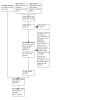
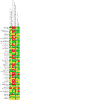

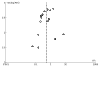

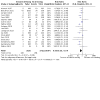


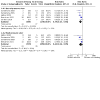
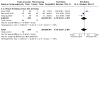
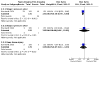


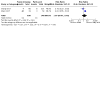

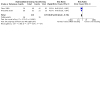

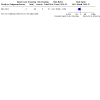

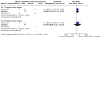

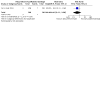
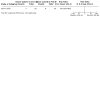
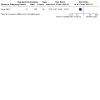
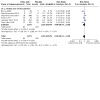

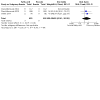


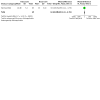

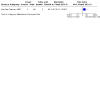


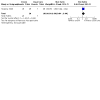
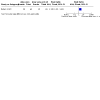

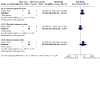

Update of
-
Dressings and topical agents for preventing pressure ulcers.Cochrane Database Syst Rev. 2018 Dec 6;12(12):CD009362. doi: 10.1002/14651858.CD009362.pub3. Cochrane Database Syst Rev. 2018. Update in: Cochrane Database Syst Rev. 2024 Dec 3;12:CD009362. doi: 10.1002/14651858.CD009362.pub4. PMID: 30537080 Free PMC article. Updated.
References
References to studies included in this review
Aloweni 2017 {published data only}
-
- Aloweni F, Lim ML, Chua TL, Tan SB, Lia SB, Ang SY. A randomised controlled trial to evaluate the incremental effectiveness of a prophylactic dressing and fatty acids oil in the prevention of pressure injuries. Wound Practice and Research: Journal of the Australian Wound Management Association 2017;25(1):24-34.
Alves 2020 {published data only}
-
- Alves P, Rhea S, Suzinara L, Lidiana S, Thais E, Camila M. Efficacy of multi-layered soft silicone foam dressing compared to transparent polyurethane film in heels pressure ulcer prevention. Journal of Wound Care 2020;29(SUPPL 7B):248.
Babamohamadi 2019 {published data only}
-
- Babamohamadi H, Ansari Z, Nobahar M, Mirmohammadkhani M. The effects of peppermint gel on prevention of pressure injury in hospitalized patients with head trauma in neurosurgical ICU: a double-blind randomized controlled trial. Complementary Therapies in Medicine 2019;47:102223. - PubMed
-
- IRCT201402098665N3. Effect of mint gel on prevention of pressure ulcer [Clinical trial of comparison effect of mint gel and placebo gel on incidence rate of pressure ulcer in hospitalized patients with head injury in neurosurgical ICU]. https://trialsearch.who.int/Trial2.aspx?TrialID=IRCT201402098665N3 (first received 6 March 2014).
Beeckman 2021 {published data only}
-
- Beeckman D, Fourie A, Raepsaet C, Van Damme N, Manderlier B, De Meyer D, et al. Silicone adhesive multilayer foam dressings as adjuvant prophylactic therapy to prevent hospital-acquired pressure ulcers: a pragmatic noncommercial multicentre randomized open-label parallel-group medical device trial. British Journal of Dermatology 2021;185(1):52-61. - PMC - PubMed
-
- NCT03442777. Silicone adhesive multilayer foam dressings to prevent pressure ulcer [Silicone adhesive multilayer foam dressings as adjuvant prophylactic therapy for pressure ulcer (PU) prevention: a multicentric randomised open label parallel group medical device trial in hospitalised patients at risk of PU development]. https://clinicaltrials.gov/study/NCT03442777 (first received 16 February 2018).
Borzou 2020 {published data only}
-
- Borzou SR, Amiri S, Azizi A, Tapak L, Bashar FR, Moradkhani ST. Topical almond oil for prevention of pressure injuries: a single-blinded comparison study. Journal of Wound, Ostomy, and Continence Nursing 2020;47(4):336-42. - PubMed
-
- RCT20171128037657N1. Investigating almond effect on bed sore [The effect of topical almond oil on the prevention of bed sore in patients admitted to the Intensive Care Unit of Besat Hospital in Hamedan]. https://irct.behdasht.gov.ir/trial/27868 (first received 11 December 2017).
Chang 2017 {published data only}
-
- Chang YY, Tay AC, Lim ML, Lian SB, Aloweni FAB. Preliminary findings of a randomized controlled trial to evaluate the effectiveness of prophylactic dressing and fatty acids oil in the prevention of pressure injuries. Journal of Wound Care 2017;26(SUPPL):424.
Chen 2020 {published data only}
-
- Chen J, Yang J, Chen Y, Liang Y, Lin Y. Investigating the efficacy of hydrocolloid dressing for preventing nasotracheal tube-related pressure injury in the PICU. Pediatric Critical Care Medicine 2020;21(9):e752‐8. - PubMed
Chiew 2010 {published data only}
-
- Chiew SF, Liu HJ, Toh HT, Dari R. Does sanyrene solution reduce incidence of pressure ulcer among the elderly with hip fracture? A randomised controlled trial. Proceedings of Singapore Healthcare 2010;19(2 (Suppl)):S154.
da Silva Augusto 2019 {published data only}
-
- da Silva Augusto F, Blanes L, Ping PZ, Saito CM, Masako Ferreira L. Hydrocellular foam versus hydrocolloid plate in the prevention of pressure injuries. Wounds 2019;31(8):193-9. - PubMed
De Wert 2019 {unpublished data only}
-
- De Wert LA, Essers BA, Kessels AA, Vogels RR, Poeze M, Schoonhoven L, et al. The prevention of sacral pressure ulcers in high-risk patients with the use of a sacral wound dressing: a randomized clinical trial. Maastricht University. https://doi.org/10.26481/dis.20190222lw 2019.
-
- NCT01640418. Prevention of sacral pressure ulcers with preventive dressings (SACRESS). https://clinicaltrials.gov/study/NCT01640418 (first received 11 July 2012).
Díaz‐Valenzuela 2014 {published data only}
-
- Díaz-Valenzuela A, Valle Canete MJ, Carmona Fernandez PJ, Garcia-Fernandez FP, Pancorbo-Hidalgo PL. Efficacy for preventing pressure ulcers of the virgin extra olive oil versus hyper-oxygenated fatty acids: intermediate results from a non-inferiority trial [Eficacia en la prevención de úlceras por presión del aceite de oliva virgen extra frente a los ácidos grasos hiperoxigenados: resultados intermedios de un estudio de no inferioridad]. Gerokomos 2014;25(2):74-80.
Díaz‐Valenzuela 2019 {published data only}
-
- Díaz-Valenzuela A, Garcia-Fernandez FP, Carmona Fernandez P, Valle Canete MJ, Pancorbo-Hidalgo PL. Effectiveness and safety of olive oil preparation for topical use in pressure ulcer prevention: multicentre, controlled, randomised, and double-blinded clinical trial. International Wound Journal 2019;16(6):1314-22. - PMC - PubMed
Dutra 2015 {published data only}
-
- Dutra RA, Salome GM, Alves JR, Pereira VO, Miranda FD, Vallim VB, et al. Using transparent polyurethane film and hydrocolloid dressings to prevent pressure ulcers. Journal of Wound Care 2015;24(6):268, 270-1, 273-5. - PubMed
Eberhardt 2021 {published data only}
-
- RBR-5gkng5. The effect of multilayer silicone foam compared to transparent film in pressure injury prevention on heels due to the surgical position [Effectiveness of multilayer silicone foam compared to transparent polyurethanefilm in pressure injury prevention on heels due to surgical positioning: randomized clinical trial]. https://ensaiosclinicos.gov.br/rg/RBR-5gkng5 (first received 25 October 2017).
Fallahi 2022 {published data only}
-
- IRCT20181105041563N4. Comparative evaluation of the effect of aloe vera gel, olive oil and compound aloe vera gel- olive oil on prevention of pressure ulcer. https://irct.behdasht.gov.ir/trial/35560 (first received 22 June 2018). - PMC - PubMed
Ferrer Sola 2013 {published data only}
-
- Ferrer Sola M, Espaulella Panicot J, Altimires Roset J, Ylla-Catala Bore E, Moreno Susi M. Comparison of efficacy of heel ulcer prevention between classic padded bandage and polyurethane heel in a medium-stay hospital: randomized controlled trial. Revista Espanola de Geriatria y Gerontologia 2013;48(1):3-8. - PubMed
Forni 2018 {published data only}
-
- Forni C, D'Alessandro F, Gallerani P, Genco R, Bolzon A, Bombino C, et al. Effectiveness of using a new polyurethane foam multi-layer dressing in the sacral area to prevent the onset of pressure ulcer in the elderly with hip fractures: a pragmatic randomised controlled trial. International Wound Journal 2018;15:383-90. - PMC - PubMed
-
- NCT02692482. Polyurethane foam on the sacrum for prevention [Effectiveness of the use of a new polyurethane foam multilayer dressing in the sacral area to prevent the onset of pressure sores in the elderly with hip fractures. Randomized controlled trial]. https://classic.clinicaltrials.gov/ct2/show/NCT02692482 (first received 26 February 2016).
Forni 2022 {published data only}
-
- Forni C, Gazineo D, Allegrini E, Bolgeo T, Brugnolli A, Canzan F, et al. Effectiveness of a multi-layer silicone-adhesive polyurethane foam dressing as prevention for sacral pressure ulcers in at-risk in-patients: randomized controlled trial. International Journal of Nursing Studies 2022;127:1-9. - PubMed
-
- NCT03900455. Prevention of pressure ulcer on the sacrum (Multischiume) [Effectiveness of the use of a polyurethane foam multilayer dressing in the sacral area, in addition to standard healthcare, to prevent the onset of pressure ulcer in patients at risk. Multicentric randomized controlled trial]. https://classic.clinicaltrials.gov/ct2/show/NCT03900455 (first received 3 April 2019).
Gazineo 2020 {published data only}
-
- Gazineo D, Chiarabelli M, Cirone R, Chiari P, Ambrosi E. Effectiveness of multilayered polyurethane foam dressings to prevent hospital-acquired sacral pressure injuries in patients with hip fracture: a randomized controlled trial. Journal of Wound, Ostomy, and Continence Nursing 2020;47(6):582‐7. - PubMed
Green 1974 {published data only}
-
- Green MF, Exton-Smith AN, Helps EP, Kataria MS, Wedgewood J, Williams TP. Prophylaxis of pressure sores using a new lotion. Modern Geriatrics 1974;4(9):376-84.
Guerra 2017 {published data only}
-
- NCT03039179. Polyurethane foam on the heel for prevention in children (SCHIUMABIMB) [Effectiveness of polyurethane foam in preventing the onset of pressure sores in a pediatric orthopedic population: randomized controlled trial]. https://classic.clinicaltrials.gov/ct2/show/NCT03039179 (first received 1 February 2017).
Hahnel 2020 {published data only}
-
- El Genedy M, Hahnel E, Tomova-Simitchieva T, Padula WV, Hauß A, Löber N, et al. Cost-effectiveness of multi-layered silicone foam dressings for prevention of sacral and heel pressure ulcers in high-risk intensive care unit patients: an economic analysis of a randomised controlled trial. International Wound Journal 2020;17(5):1291-9. - PMC - PubMed
-
- Hahnel E, El Genedy M, Tomova-Simitchieva T, Haus A, Stroux A, Lechner A, et al. The effectiveness of two silicone dressings for sacral and heel pressure ulcer prevention compared with no dressings in high-risk intensive care unit patients: a randomized controlled parallel-group trial. British Journal of Dermatology 2020;183(2):256-64. - PubMed
-
- NCT02295735. Effectiveness of two silicone dressings for sacral and heel pressure ulcer prevention [A randomized controlled parallel-group trial to investigate the effectiveness of two silicone dressings for sacral and heel pressure ulcer prevention compared to no dressings]. https://classic.clinicaltrials.gov/ct2/show/NCT02295735 (first received 20 November 2014). - PubMed
Han 2011 {published data only}
-
- Han J, Li G, Wang A. Control study on pressure sore prevention for patients accepting posterior spinal surgery. Chinese Nursing Research 2011;25:308-10.
Hekmatpou 2018 {published data only}
-
- IRCT2016051027825N1. Effect of aloe vera gel on prevention of pressure sore among patients hospitalized in orthopedic ward. https://irct.behdasht.gov.ir/trial/22716 (first received 7 September 2016).
Houwing 2008 {published data only}
-
- Houwing R, Van der Zwet W, Van Asbeck S, Halfens R, Arends JW. An unexpected detrimental effect on the incidence of heel pressure ulcers after local 5% DMSO cream application: a randomized, double-blind study in patients at risk for pressure ulcers. Wounds 2008;20(4):84-8. - PubMed
Huang 2021 {published data only}
-
- Huang M, Zhu Y, Zhang Q, Huang S, Liang H. Effect of Sanyrene combined with Mepilex Border in prevention of pressure injuries in the perioperative period of the spinal surgery. Chinese Journal of Integrative Nursing 2021;7(6):71-4.
Imbulana 2018 {published data only}
-
- ACTRN12616000438459. A randomised trial of a nasal barrier dressing to reduce nasal trauma in very preterm infants receiving continuous positive airway pressure (CPAP) or nasal intermittent positive pressure ventilation (NIPPV) treatment: The ProNose study [A randomised trial of a nasal barrier dressing to reduce nasal trauma in very preterm infants receiving CPAP/NIPPV treatment]. https://www.anzctr.org.au/Trial/Registration/TrialReview.aspx?id=370232&... (first received 16 March 2016).
-
- Imbulana DI, Owen LS, Dawson JA, Bailey JL, Davis PG, Manley BJ. The pronose study: a randomised controlled trial of a nasal barrier dressing to reduce injury in preterm infants receiving binasal non-invasive respiratory support. Journal of Paediatrics and Child Health 2018;54:82-3.
Kalowes 2016 {published data only}
-
- Kalowes P, Messina V, Li M. Five-layered soft foam dressing to prevent pressure ulcers in the intensive care unit. American Journal of Critical Care 2016;25(6):e108-19. - PubMed
Karimi 2020 {published data only}
Lee 2019 {published data only}
Lovegrove 2022 {published data only}
-
- Lovegrove J, Fulbrook P, Miles SJ. Use of a sacral foam dressing to prevent pressure injury in at-risk subacute hospitalized older adults: a pilot randomized controlled trial. Journal of Wound, Ostomy, and Continence Nursing 2022;49(4):322-30. - PubMed
Lupianez‐Perez 2015 {published data only}
-
- Lupianez-Perez I, Uttumchandani SK, Morilla-Herrera JC, Martin-Santos FJ, Fernandez-Gallego MC, Navarro-Moya FJ. Topical olive oil is not inferior to hyperoxygenated fatty aids to prevent pressure ulcers in high-risk immobilised patients in home care. Results of a multicentre randomised triple-blind controlled non-inferiority trial. PLOS One 2015;10(4):e0122238. - PMC - PubMed
-
- NCT01595347. Olive oil's cream effectiveness in prevention of pressure ulcers in immobilized patients in primary care (PrevenUP) [Olive oil's cream effectiveness in prevention of pressure ulcers in immobilized patients in primary care. A cluster randomized clinical trial]. https://clinicaltrials.gov/study/NCT01595347 (first received 10 January 2010).
Madadi 2015 {published data only}
-
- IRCT2013111014634N2. Effect of topical olive oil on prevention of bedsore in intensive care unit patients [Effect of topical oive oil on prevention of bedsore in ICU patients at educational -medical hospitals of Qazvin]. https://irct.behdasht.gov.ir/trial/14214 (first received 4 April 2013).
-
- Madadi ZA, Zeighami R, Azimian J, Javadi A. The effect of topical olive oil on prevention of bedsore in intensive care units patients. International Journal of Research in Medical Sciences 2015;3(9):2342-7.
Nakagami 2007 {published data only}
-
- Nakagami G, Sanada H, Konya C, Kitagawa A, Tadaka E, Matsuyama Y. Evaluation of a new pressure ulcer preventive dressing containing ceramide 2 with low frictional outer layer. Journal of Advanced Nursing 2007;59(5):520-9. - PubMed
Oe 2020 {published data only}
-
- UMIN000024609. Prevention effect of wound dressings for pressure sores in high-risk patients. https://center6.umin.ac.jp/cgi-open-bin/ctr_e/ctr_view.cgi?recptno=R0000... (first received 28 October 2016).
Otero 2017 {published data only}
-
- NCT02526862. Prevention of pressure ulcers in patients under non-invasive mechanical ventilation (PUPPVMNI) [Prevention of pressure ulcers in patients under non-invasive mechanical ventilation. Randomized clinical trial]. https://clinicaltrials.gov/study/NCT02526862 (first received 6 August 2015).
-
- Otero DP, Domínguez DV, Fernández LH, Magariño AS, González VJ, Klepzing JV, et al. Preventing facial pressure ulcers in patients under non-invasive mechanical ventilation: a randomised control trial. Journal of Wound Care 2017;26(3):128-36. - PubMed
Ozbudak 2020 {published data only}
-
- Ozbudak G, Yesilbalkan OU. Effect of transparent film on the duration of pressure ulcer formation for noninvasive ventilation patients: a randomized controlled trial. Nigerian Journal of Clinical Practice 2020;23(1):91‐7. - PubMed
Qiuli 2010 {published data only}
-
- Qiuli B, Qiongyu J. Observation on effect of mepilex on the prevention and treatment of pressure sores. Chinese Journal of Medical Nursing 2010;6:CN-00845036.
Saab 2015 {published data only}
-
- Saab I, Solomon JF, Allen L, Siddiqui A. Hydrocellular foam is a cost-effective dressing for preventing pressure ulcers: a randomized controlled study. Journal of the American College of Surgeons 2015;221(4 (1 Suppl)):S114.
Santamaria 2015 {published data only}
-
- NCT01356459. Pressure ulcer prevention in intensive care unit (ICU) [A prospective randomised controlled trial of the effectiveness of absorbent silicone self adherent dressings in the prevention of sacral and heel pressure ulcers in trauma and critically ill ED/ICU patients]. https://classic.clinicaltrials.gov/ct2/show/NCT01356459 (first received 19 May 2011).
-
- Santamaria N, Gerdtz M, Sage S, McCann J, Freeman A, Vassiliou T, et al. A randomised controlled trial of the effectiveness of soft silicone multi-layered foam dressings in the prevention of sacral and heel pressure ulcers in trauma and critically ill patients: the Border Trial. International Wound Journal 2015;12(3):302-8. [DOI: 10.1111/iwj.12101] - DOI - PMC - PubMed
-
- Santamaria N, Liu W, Gerdtz M, Sage S, Mccann J, Freeman A, et al. The cost-benefit of using soft silicone multilayered foam dressings to prevent sacral and heel pressure ulcers in trauma and critically ill patients: a within-trial analysis of the Border Trial. International Wound Journal 2015;12(3):344-50. [DOI: 10.1111/iwj.12160] - DOI - PMC - PubMed
Santamaria 2018 {published data only}
-
- Santamaria N, Gerdtz M, Kapp S, Wilson L, Gefen A. A randomised controlled trial of the clinical effectiveness of multi-layer silicone foam dressings for the prevention of pressure injuries in high-risk aged care residents: the Border III Trial. International Wound Journal 2018;15(3):482-90. - PMC - PubMed
Smith 1985 {published data only}
-
- Smith RG, Everett E, Tucker L. A double blind trial of silicone barrier cream in the prevention of pressure sores in elderly patients. Journal of Experimental Gerontology 1985;7(4):337-46.
Sonmez 2020 {published data only}
-
- Sonmez M, Yapucu Gunes U. Preventive effect of extra virgin olive oil on pressure injury development: a randomized controlled trial in Turkey. Complementary Therapies in Clinical Practice 2020;40(10):1208. - PubMed
Stankiewicz 2019 {published data only}
-
- Stankiewicz M, Gordon J, Dulhunty JM, Brown W, Pollock H, Barker-Gregory N. A cluster-controlled clinical trial of two prophylactic silicone sacral dressings to prevent sacral pressure injuries in critically ill patients. Wound Practice & Research 2019;27(1):21-6.
Torra i Bou 2005 {published data only}
-
- Torra i Bou J, Gomez TS, Soriano JV, Bonmati AN, Lopez JR, Arboix i Perejamo M. The effectiveness of a hyper-oxygenated fatty acid compound in preventing pressure ulcers. Journal of Wound Care 2005;14(3):117-21. - PubMed
Van Der Cammen 1987 {published data only}
-
- Van Der Cammen TJ, O'Callaghan U, Whitefield M. Prevention of pressure sores: a comparison of new and old pressure sore treatments. British Journal of Clinical Practice 1987;41(11):1009-11. - PubMed
Verdu 2012 {published data only}
Walker 2015 {published data only}
-
- ACTRN12613001328763. Prophylactic dressing to minimise sacral pressure injuries in high risk hospitalised patients: a pilot study [A pilot study comparing prophylactic dressing with routine care versus routine care alone to minimise sacral pressure injuries in hospitalised patients at high risk of developing pressure injury]. https://www.anzctr.org.au/Trial/Registration/TrialReview.aspx?ACTRN=1261... (first received 28 November 2013).
Wang 2016 {published data only}
-
- Wang L, Zhao Y, Ma J. Effect of prevention of adhesive dressing (ALLEVYN) to use of noninvasive ventilator caused by pressure ulcers. Chest 2016;1:A161.
Yang 2020 {published data only}
-
- Yang G, Gao C, Cai J. Prevention of nasal ala pressure injuries with use of hydroactive dressings in patients with nasotracheal intubation of orthognathic surgery: a randomized controlled trial. Journal of Wound, Ostomy, and Continence Nursing 2020;47(5):484‐8. - PubMed
Yanping 2018 {published data only}
-
- Yanping WU, Xinli LIU. Effects of Comfeel foam dressing on pressure ulcer prevention in high-risk patients. Nursing of Integrated Traditional Chinese and Western Medicine 2018;4(11):152-4.
References to studies excluded from this review
Alvarez Vázquez 2014 {published data only}
-
- Alvarez Vázquez JC, Estany Gestal A, Álvarez Suárez T, Mosquera J, Castro Prado J, Gutiérrez Moeda E, et al. Prevention of deterioration of the cutaneous integrity in the sacral area through the application of an atraumatic self-adherent foam dressing. Metas de Enfermería 2014;17(2):14-20.
Callaghan 1998 {published data only}
-
- Callaghan S, Trapp M. Evaluating two dressings for the prevention of nasal bridge pressure sores. Professional Nurse 1998;13(6):361-4. - PubMed
Declaire 1997 {published data only}
-
- Declaire V. The usefulness of topical application of essential fatty acids (EFA) to prevent pressure ulcers. Ostomy/Wound Management 1997;43(5):48-54. - PubMed
Duimel‐Peeters 2007 {published data only}
-
- Duimel-Peeters IG, Halfensa RJ, Ambergen AW, Houwing RH, Berger MP, Luc HE, et al. The effectiveness of massage with and without dimethyl sulfoxide in preventing pressure ulcers: a randomized, double-blind cross-over trial in patients prone to pressure ulcers. International Journal of Nursing Studies 2007;44(8):1285-95. - PubMed
Garcia Fernandez 2005 {published data only}
-
- Garcia Fernandez FP, Pancorbo Hidalgo PL, Rodriguez Torres MC. Protective bandage or hydrocellular dressing to prevent pressure ulcers on heels? Gerokomos 2005;16(1):54-8.
Genc 2022 {published data only}
Guo 2015 {published data only}
-
- Guo H. Effect comparison of nursing of foam dressing in prevention of pressure sores in patients with preoperative and postoperative ambulatory surgery in the department of orthopedics. Chinese Community Doctors 2015;31(34):130-1.
Hsu 2011 {published data only}
-
- Hsu MY, Hsiu SR, Chung HC, Chang SC, Tang M, Tai CH. Evaluating dressings for the prevention of facial pressure ulcers caused by the application of noninvasive positive pressure ventilation: a pilot study. EWMA Journal 2011;11(Suppl):213.
Huang 2009 {published data only}
-
- Huang TT, Tseng CE, Lee TM, Yeh JY, Lai YY. Preventing pressure sores of the nasal ala after nasotracheal tube intubation: from animal model to clinical application. Journal of Oral and Maxillofacial Surgery 2009;67(3):543-51. - PubMed
Kalowes 2013 {published data only}
-
- Kalowes P, Li M, Carlson C, Carr L, Llantero L, Lukaszka D, et al. Use of a silicone border sacrum dressing to reduce pressure ulcer formation in critically ill patients: a randomized clinical trial. EWMA Journal 2013;13(1 Suppl):63. [Abstract 88]
Kim 2016 {published data only}
-
- Kim H, Lee SM, Choi HY, Min, YK, Jung YJ. Prophylactic effect of transparent film dressing on sacrum and coccyx in SICU patients. Journal of Korean Academy of Fundamentals of Nursing 2016;23(3):256.
Kuisma 1987 {published data only}
-
- Kuisma I, Tamelander G. Mucopolysaccharide polysulphate cream in the prevention of pressure sores-a double blind study. Annals of Clinical Research 1987;19(6):374-7. - PubMed
Lockwood 2022 {published data only}
-
- Lockwood I, Walker RM, Chaboyer W, Cooke M, Whitty JA, Thalib L, et al. Process evaluation of an intervention to test the effectiveness of foam border dressings in preventing hospital-acquired sacral pressure injuries (the EEPOC trial): a protocol. Journal of Tissue Viability 2022;31(1):158-63. - PubMed
Miraj 2020 {published data only}
Park 2014a {published data only}
-
- Park KH. The effect of a silicone border foam dressing for prevention of pressure ulcers and incontinence-associated dermatitis in intensive care unit patients. Journal of Wound, Ostomy, and Continence Nursing 2014;41(5):424-39. - PubMed
Park 2014b {published data only}
-
- Park KH. The effect of a ceramide-containing dressing in preventing pressure ulcers. Journal of Wound Care 2014;23(7):347-53. [DOI: ] - PubMed
Poursadra 2019 {published data only}
Santamaria 2013 {published data only}
-
- Santamaria N, Gerdtz M, Vassiliou T, Knott J, DeVincentis S, Sage S, et al. The border trial: a prospective randomised controlled trial of the effectiveness of multi-layer silicone dressings in preventing intensive care unit pressure ulcers. EWMA Journal 2013;13(1 Suppl):93. [Abstract 147]
Smith 2010 {published data only}
-
- Smith G, Ingram A. Clinical and cost effectiveness evaluation of low friction and shear garments. Journal of Wound Care 2010;19(12):535-42. - PubMed
Stoker 1990 {published data only}
-
- Stoker FM. A major contributor. Evaluation of Comfeel pressure relieving dressing. Professional Nurse 1990;5(12):644-53. - PubMed
Torra i Bou 2009 {published data only}
-
- Torra i Bou JE, Narváez EH, Martinez-Esparza EH, Segovia Gómez T, López JR, Blanco Blanco J, et al. Preventing pressure ulcers on the heel: a Canadian cost study. Dermatology Nursing 2009;21(5):268-72. - PubMed
Wen‐Yi 2013 {published data only}
Yang TY 2020 {published data only}
-
- Yang TY, Shin SH. Effect of soft silicone foam dressings on intraoperatively acquired pressure injuries: a randomized study in patients undergoing spinal surgery. Wound Management and Prevention 2020;66(11):22-9. - PubMed
References to ongoing studies
ACTRN12619000763145 {published data only}
-
- Gillespie B. Effectiveness of Prophylactic foam dressings in the prevention of sacral pressure injuries in at-risk hospitalised patients: The EEPOC Trial. ACTRN12619000763145. Australian New Zealand Clinical Trials Registry. https://www.anzctr.org.au/Trial/Registration/TrialReview.aspx?id=377447&... 2022. - PMC - PubMed
ACTRN12620000875909 {published data only}
-
- Latimer S. Prophylactic sacral dressings to prevent hospital-acquired pressure injuries in adult intensive care unit patients: A pilot randomised controlled trial. ACTRN12620000875909. Australian New Zealand Clinical Trials Registry. https://www.anzctr.org.au/Trial/Registration/TrialReview.aspx?id=379696 2024.
ACTRN12621001072808 {published data only}
-
- Hunt L. A randomised controlled phase II trial to examine the feasibility of using hyperoxygenated fatty acids (HOFA) to prevent facial pressure injuries from medical devices among adults admitted to intensive care – a research protocol.. ACTRN12621001072808. Australian New Zealand Clinical Trials Registry. https://anzctr.org.au/Trial/Registration/TrialReview.aspx?ACTRN=12621001... 2024. - PMC - PubMed
ACTRN12622000728730 {published data only}
-
- Petkovska G. Multilayer Silicone Dressings as Compared with Standard Care for Prevention of Sacral Pressure Injuries in Community Cancer Patients: A Cluster Randomised Control Trial. ACTRN12622000728730. Australian New Zealand Clinical Trials Registry https://www.anzctr.org.au/Trial/Registration/TrialReview.aspx?id=384006 2022.
ACTRN12622000793718 {published data only}
-
- Latimer S. Testing the efficacy of two sacral dressings in preventing pressure injuries(z) in adult intensive care population: TOWARDS ZERO pilot study. ACTRN12622000793718. Australian New Zealand Clinical Trials Registry. https://www.anzctr.org.au/Trial/Registration/TrialReview.aspx?id=384112&... 2022.
ACTRN12622001360707 {published data only}
-
- Ryan H. A single blinded, multi-centre randomised controlled trial (RCT) will be conducted to investigate the effectiveness of a twice-daily application of a barrier wipe (contiplan) on the incidence of pressure injuries (PI) in residential aged care facilities (RACF). ACTRN12622001360707. Australian New Zealand Clinical Trials Registry. https://www.anzctr.org.au/Trial/Registration/TrialReview.aspx?id=384714&... 2022.
ChiCTR2100050305 {published data only}
-
- Xiaodan L. Intervention of skin microclimate on intraoperative pressure injury. ChiCTR2100050305. Chinese Clinical Trial Registry. https://www.chictr.org.cn/indexEN.html 2021.
CTRI/2021/11/038231 {published data only}
-
- Thanigainathan S. Does intermittent nasal massage with coconut oil reduce nasal injury in neonates on nasal CPAP compared with nasal barrier dressing. CTRI/2021/11/038231. Clinical Trials Registry - India. https://trialsearch.who.int/Trial2.aspx?TrialID=CTRI/2021/11/038231 2021.
IRCT20150519022320N20 {published data only}
-
- Mirzaei T. Comparative investigating of the Effect of Aloe Vera gel and Olive Oil on Incidence of pressure ulcer in patients Hospitalized. IRCT20150519022320N20. Iranian Registry of Clinical Trials. https://irct.behdasht.gov.ir/trial/38444 2019.
IRCT20160110025929N23 {published data only}
-
- Vardanjani M. Study of the effect of fish oil in prevention of pressure ulcer of hospitalized patients admitted to intensive care unit. IRCT20160110025929N23. Iranian Registry of Clinical Trials. https://irct.behdasht.gov.ir/trial/38897 2019.
IRCT20210317050732N1 {published data only}
-
- Maboudi A. The effect of topical application of black seed oil on the prevention of bedsores in patients admitted to the intensive care unit. IRCT20210317050732N1. Iranian Registry of Clinical Trials. https://irct.behdasht.gov.ir/trial/55110 2021.
IRCT20220110053683N1 {published data only}
-
- Ahmadi P. Comparison of the effect of olive oil and sesame oil on the prevention of pressure ulcers in ICU patients. RCT20220110053683N1. Iranian Registry of Clinical Trials. https://irct.behdasht.gov.ir/trial/61205 2022.
JPRN‐UMIN000024609 {published data only}
-
- Sanada H. Prevention effect of wound dressings for pressure sores in high-risk patients. JPRN-UMIN000024609 . www.who.int/trialsearch/Trial2.aspx?TrialID=JPRN-UMIN000024609 2018.
KCT0006781 {published data only}
-
- Jang I. A randomised controlled trial of the effectiveness of multi‐layer silicone foam dressings for the prevention of pressure injuries in postoperative patients. KCT0006781. Korean Clinical Trial Registry. https://cris.nih.go.kr/cris/search/detailSearch.do?seq=20904&search_... 2022.
NCT02565745 {unpublished data only}
-
- Cortes OL. Impact of the use of dressings versus lubrication of the skin with cream to prevent pressure ulcers: clinical trial (PENFUP). NCT02565745. clinicaltrials.gov/ct2/show/NCT02565745 2015.
NCT04682925 {published data only}
-
- Yesilyurt M. Effect of Evidence-Based Skin Care and Hydrocolloid Dressing in the Prevention of Nasogastric-Related Pressure Injury. NCT04682925. ClinicalTrials.gov. https://clinicaltrials.gov/study/NCT04682925 2022. - PubMed
NCT05198167 {published data only}
-
- Maculet-García L. Efficacy of HOFA Versus Hydrocolloid Dressings in the Prevention of PUs in Critically Ill Prone Patients. NCT05198167. ClinicalTrials.gov. https://clinicaltrials.gov/study/NCT05198167 2021.
NCT05578638 {published data only}
-
- Soliman AF. Comparing Aloe Vera Gel and Rosemary Oil in Pressure Injury Prevention. NCT05578638. ClinicalTrials.gov. https://clinicaltrials.gov./study/NCT05578638?term=NCT05578638&rank=1 2022.
RBR‐4s8qjx {published data only}
-
- Soares RS. Effect of soft silicone foam dressing compared to film transparent dressing in pressure ulcer prevention. RBR-4s8qjx. www.who.int/trialsearch/Trial2.aspx?TrialID=RBR-4s8qjx 2017.
Additional references
Alshahrani 2021
Avsar 2020
Azuh 2016
Bader 1990
-
- Bader DL. Effects of compressive loading regimens on tissue viability. In: Bader DL, editors(s). Pressure Sores: Clinical Practice and Scientific Approach. London: MacMillan, 1990:191-201.
Barbarel 1977
-
- Barbarel JC, Jordan MM, Nicol SM, Clark MO. Incidence of pressure sores in the greater Glasgow Health Board area. Lancet 1977;2(8037):548-50. - PubMed
Bateman 2013
-
- Bateman SD, Roberts S. Moisture lesions and associated pressure ulcers: getting the dressing regime right. Wounds UK 2013;9(2):97-102.
Bergstrom 1987
-
- Bergstrom N, Braden BJ, Laguzza A, Holman V. The Braden Scale for predicting pressure sore risk. Nursing Research 1987;36(4):205-10. - PubMed
Black 2007
-
- Black J, Baharestani M, Cuddigan J, Dorner B, Edsberg L, Langemo D, et al. National Pressure Ulcer Advisory Panel's updated pressure ulcer staging system. Dermatology Nursing 2007;19(4):343-9. - PubMed
Butcher 2009
-
- Butcher M, Thompson G. Dressings can prevent pressure ulcers: fact or fallacy? The problem of pressure ulcer prevention. Wounds UK 2009;5(4):80-93.
Coleman 2014
Collier 2006
-
- Collier M, Moore Z. Pressure ulcer aetiology and risk factors. In: Romanelli M, Clark M, Cherry G, Colin D, Defloor T, editors(s). Science and Practice of Pressure Ulcers. London: SpringerVerlag, 2006:27-36.
Deeks 2011
-
- Deeks JJ, Higgins JP, Altman DG, on behalf of the Cochrane Statistical Methods Group and the Cochrane Bias Methods Group. Chapter 9: Analysing data and undertaking meta-analysis. In: Higgins JP, Green S, editor(s). Cochrane Handbook for Systematic Reviews of Interventions Version 5.1.0 (updated March 2011). The Cochrane Collaboration, 2011. Available from training.cochrane.org/handbook/archive/v5.1/.
Demarre 2015
-
- Demarre L, Van Lancker A, Van Hecke A, Verhaeghe S, Grypdonck M, Lemey J, et al. The cost of prevention and treatment of pressure ulcers: a systematic review. International Journal of Nursing Studies 2015;52:1754-74. - PubMed
Diaz‐Valenzuela 2019
-
- Díaz‐Valenzuela A, García‐Fernández FP, Carmona Fernández P, Valle Cañete MJ, Pancorbo‐Hidalgo PL. Effectiveness and safety of olive oil preparation for topical use in pressure ulcer prevention: multicentre, controlled, randomised, and double‐blinded clinical trial. International Wound Journal 2019;16(6):1314-22. - PMC - PubMed
Edsberg 2016
EPUAP/NPIAP/PPPIA 2019
-
- European Pressure Ulcer Advisory Panel (EPUAP), National Pressure Injury Advisory Panel (NPUAP), Pan Pacific Pressure Injury Alliance (PPPIA). Prevention and Treatment of Pressure Ulcers/Injuries: Clinical Practice Guideline. The International Guideline. EPUAP/NPIAP/PPPIA, 2019.
EuroQol Group 1990
-
- EuroQol Group 1990. EuroQol--a new facility for the measurement of health-related quality of life. Health Policy 1990;16(3):199-208. - PubMed
Fulbrook 2019
-
- Fulbrook P, Mbuzi V, Miles S. Effectiveness of prophylactic sacral protective dressings to prevent pressure injury: a systematic review and meta-analysis. International Journal of Nursing Studies 2019;100(103400):1-13. [PMID: doi: 10.1016/j.ijnurstu.2019.103400] - PubMed
García‐Fernández 2014
-
- García-Fernández FP, Soldevilla Ágreda JJ, Pancorbo Hidalgo PL, Verdú Soriano J, López-Casanova P, Rodríguez-Palma M. Classification/categorisation of dependence-related lesions [Clasificación-categorización de las lesiones relacionadas con la dependencia]. In: Serie Documentos Técnicos GNEAUPP no.II. 2nd edition. Logroño, Spain: Grupo Nacional para el Estudio y Asesoramiento en Úlceras Por Presión y Heridas Crónicas, 2014.
Gaspar 2019
Gefen 2017
-
- Gefen A. Why is the heel particularly vulnerable to pressure ulcers? British Journal of Nursing 2017;26:S62-74. - PubMed
Gefen 2019
Gefen 2020
-
- Gefen A. Pressure ulcer prevention dressing design and biomechanical efficacy. Journal of Wound Care 2020;29 (Sup 12):S6-15. - PubMed
Gefen 2021
Gillespie 2020
Glanville 2019
-
- Glanville J, Dooley G, Wisniewski S, Foxlee R, Noel-Storr A. Development of a search filter to identify reports of controlled clinical trials within CINAHL Plus. Health Information and Libraries Journal 2019;36(1):73-90. [PMID: ] - PubMed
Gorecki 2009
-
- Gorecki C, Brown JM, Nelson EA, Briggs M, Schoonhoven L, Dealey C, et al. Impact of pressure ulcers on quality of life in older patients: a systematic review. Journal of the American Geriatrics Society 2009;57(7):1175-83. - PubMed
Gorecki 2012
-
- Gorecki C, Nixon J, Madill A, Firth J, Brown JM. What influences the impact of pressure ulcers on health-related quality of life? A qualitative patient-focused exploration of contributory factors. Journal of Tissue Viability 2012;21:3-12. - PubMed
GRADEpro GDT 2024 [Computer program]
-
- GRADEpro GDT. Version accessed prior to 10 September 2024. Hamilton (ON): McMaster University (developed by Evidence Prime), 2024. Available at https://www.gradepro.org.
Grigatti 2021
Guest 2018
Hauck 2017
Higgins 2003
Higgins 2011a
-
- Higgins JP, Green S, editor(s). Cochrane Handbook for Systematic Reviews of Interventions Version 5.1.0 (updated March 2011). The Cochrane Collaboration, 2011. Available from https://training.cochrane.org/handbook/archive/v5.1/.
Higgins 2011b
-
- Higgins JP, Altman DG, on behalf of the Cochrane Statistical Methods Group and the Cochrane Bias Methods Group. Chapter 8: Assessing risk of bias in included studies. In: Higgins JP, Green S, editor(s). Cochrane Handbook for Systematic Reviews of Interventions Version 5.1.0 (updated March 2011). The Cochrane Collaboration, 2011. Available from https://training.cochrane.org/handbook/archive/v5.1/.
Higgins 2011c
-
- Higgins JP, Deeks JJ, Altman DG, on behalf of the Cochrane Statistical Methods Group. Chapter 16: Special topics in statistics. In: Higgins JP, Green S, editor(s). Cochrane Handbook for Systematic Reviews of Interventions Version 5.1.0 (updated March 2011). The Cochrane Collaboration, 2011. Available from https://training.cochrane.org/handbook/archive/v5.1/.
Kim 2019
Kosiak 1959
-
- Kosiak M. Etiology and pathology of ischaemic ulcers. Archives of Physical Medicine and Rehabilitation 1959;40(2):62-9. - PubMed
Langer 2014
Lechner 2022
Lefebvre 2022
-
- Lefebvre C, Glanville J, Briscoe S, Featherstone R, Littlewood A, Marshall C, et al. Chapter 4: Searching for and selecting studies. In Higgins JP, Thomas J, Chandler M, Cumpston T, Li MJ, Page, et al, editor(s). Cochrane Handbook for Systematic Reviews of Interventions Version 6.3 (updated February 2022). Cochrane, 2022. Available from https://training.cochrane.org/handbook/archive/v6.3.
Li 2020
-
- Li Z, Lin F, Thalib L, Chaboyer W. Global prevalence and incidence of pressure injuries in hospitalised adult patients: a systematic review and meta-analysis. International Journal of Nursing Studies 2020;105:103546. - PubMed
Liberati 2009
Lin 2020
Marshall 2019
Moore 2019a
-
- Moore Z, Avsar P, Conaty L, Moore D H, Patton D, O'Connor T. The prevalence of pressure ulcers in Europe. What does the European data tell us: a systematic review. Journal of Wound Care 2019;28(11):710-9. - PubMed
Moore 2019b
Ngheim 2022
-
- Ngheim S, Campbell J, Walker R, Byrnes J, Chaboyer W. Pressure injuries in Australian public hospitals: a cost of illness study. International Journal of Nursing Studies 2022;130:104191. - PubMed
NICE 2014
-
- National Institute for Health and Clinical Excellence (NICE). Pressure ulcers: prevention and management of pressure ulcers. Clinical guideline CG179; 23 April 2014. Available at https://www.nice.org.uk/guidance/cg179. - PubMed
Norton 1975
-
- Norton D, McLaren R, Exton-Smith AN. An Investigation of Geriatric Nursing Problems in Hospital. 2nd edition. New York: Churchill Livingstone, 1975.
O'Callaghan 2007
-
- O Callaghan M, Reilly S, Seery A. Pressure. In: Exploring Science. Dublin: Education Company, 2007:270-7.
Oomens 2015
-
- Oomens CJ, Bader D, Loerakker S, Baaljens F. Pressure induced deep tissue injury explained. Annals of Biomedical Engineering 2015;43:297-305. - PubMed
Padula 2019
Park 2014
Reddy 2006
-
- Reddy M, Gill SS, Rochon PA. Preventing pressure ulcers: a systematic review. JAMA 2006;296(8):974-84. - PubMed
Reid 2016
-
- Reid K, Ayello EA, Alavi A. Pressure ulcer prevention and treatment: use of prophylactic dressings. Chronic Wound Care Management and Research. 2016;3:117-21. [DOI: 10.2147/CWCMR.S78422] - DOI
RevMan 2024 [Computer program]
-
- Review Manager (RevMan). Version 8.5.0. Copenhagen: The Cochrane Collaboration, 2024. Available at https://revman.cochrane.org.
Rogers 2021
-
- Rodgers K, Sim J, Clifton R. Systematic review of pressure injury prevalence in Australian and New Zealand hospitals. Collegian 2021;28(3):310-23.
Ryan 2016
-
- Ryan R, Hill S. How to GRADE the quality of the evidence. Cochrane Consumers and Communication Group. Version 3.0 December 2016. Available at http://cccrg.cochrane.org/author-resources.
Schünemann 2011a
-
- Schünemann HJ, Oxman AD, Higgins JP, Vist GE, Glasziou P, Guyatt GH. Chapter 11: Presenting results and 'Summary of findings' tables. In: Higgins JP, Green S, editor(s). Cochrane Handbook for Systematic Reviews of Interventions Version 5.1.0 (updated March 2011). The Cochrane Collaboration, 2011. Available from https://training.cochrane.org/handbook/archive/v5.1/.
Schünemann 2011b
-
- Schünemann HJ, Oxman AD, Vist GE, Higgins JP, Deeks JJ, Glasziou P. Chapter 12: Interpreting results and drawing conclusions. In: Higgins JP, Green S, editor(s). Cochrane Handbook for Systematic Reviews of Interventions Version 5.1.0 (updated March 2011). The Cochrane Collaboration, 2011. Available from https://training.cochrane.org/handbook/archive/v5.1/.
Schünemann 2013
-
- Schünemann H, Brożek J, Guyatt G, Oxman A, editor(s). Handbook for grading the quality of evidence and the strength of recommendations using the GRADE approach (updated October 2013). GRADE Working Group, 2013. Available from gdt.guidelinedevelopment.org/app/handbook/handbook.html.
Shi 2021a
-
- Shi C, Dumville JC, Cullum N, Rhodes S, McInnes E, Goh EL, et al. Beds, overlays and mattresses for preventing and treating pressure ulcers: an overview of Cochrane Reviews and network meta-analysis. Cochrane Database of Systematic Reviews 2021, Issue 8. Art. No: CD013761. [DOI: 10.1002/14651858.CD013761] - DOI - PMC - PubMed
Shi 2021b
Shi 2021c
Shi 2021d
Shi 2021e
Slawomirski 2017
-
- Slawomirski, L, Auraaen A, Klazinga N. The economics of patient safety: strengthening a value-based approach to reducing patient harm at national level. OECD Health Division, Report No.: DI161105 2017. [DOI: ]
Sullivan 2013
-
- Sullivan N, Schoelles KM. Preventing in-facility pressure ulcers as a patient safety strategy: a systematic review. Annals of Internal Medicine 2013;158:410-6. - PubMed
Tarnowski Goodell 2013
Tezcan 2022
Tsuji 2005
-
- Tsuji S, Ichioka S, Sekiya N, Nakatsuka T. Analysis of ischemia reperfusion injury in a microcirculatory model of pressure ulcers. Wound Repair and Regeneration 2005;13(2):209-15. - PubMed
Vanderwee 2009
-
- Vanderwee K, Grypdonck M, De Bacquer D, Defloor T. The identification of older nursing home residents vulnerable for deterioration of grade 1 pressure ulcers. Journal of Clinical Nursing 2009;18(21):3050–8. - PubMed
Verdú 2012
Waterlow 1985
-
- Waterlow J. A risk assessment card. Nursing Times 1985;81(48):49-55. - PubMed
Zhao 2021
-
- Zhao J, Cao Y, Cheng Y, Sun H, Chen T, Zhong Y, et al. Outcomes of present-on-admission pressure injuries at discharge and potential prognostic factors: a historical cohort study in China. Journal of Tissue Viability 2021;30:576-81. - PubMed
References to other published versions of this review
Moore 2011
Moore 2013
Publication types
MeSH terms
Substances
LinkOut - more resources
Full Text Sources
Medical

